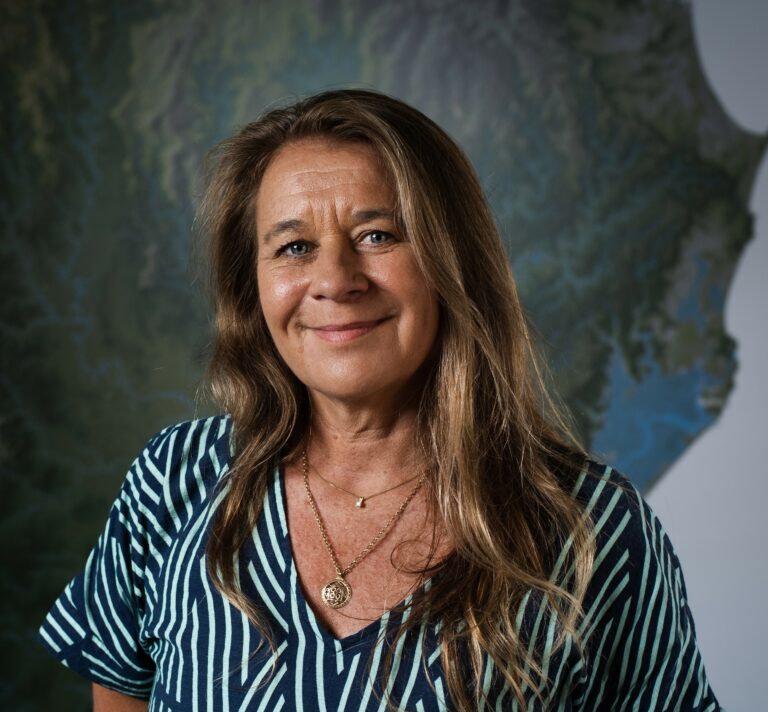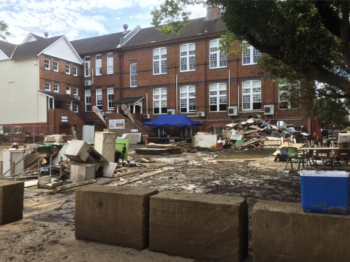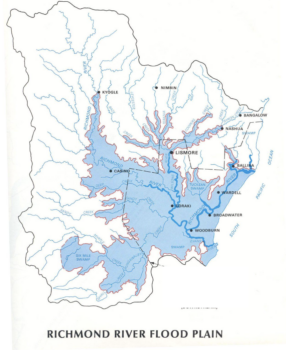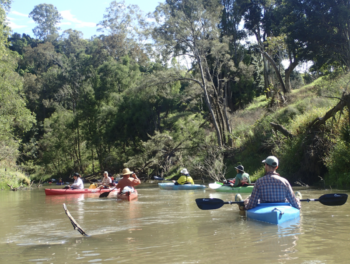Who Is Waterkeeper: Amanda Reichelt-Brushett, Richmond Riverkeeper
By: Thomas Hynes

Richmond Riverkeeper is one of the newest Waterkeeper groups in the movement. Their official membership only went live in December of 2023. But the impetus for the organization goes back to early 2022. Flooding had ravaged eastern Australia. It was the worst recorded flood in the region’s history, with some areas experiencing flooding over 2 meters higher than anything ever recorded. This disaster took several lives and caused billions of dollars in damages.
Though the flooding was acutely catastrophic, the Richmond River has long been vulnerable. According to Richmond Riverkeeper Professor Amanda Reichelt-Brushett, the river has the poorest water quality rating of coastal rivers in New South Wales, Australia. She says it suffers from a ‘historical misunderstanding of the connections between land use and water quality.’ In the 1800’s the timber industry reduced what is known as the ‘Big Scrub Rainforest’ to just 1% of its original size, leading to massive erosion and sedimentation issues.
Further damaging the watershed, or catchment, was the wide scale draining of wetlands for agricultural purposes. This transformation led to the exposure of acid sulfate soils. The removal of water-tolerant wetland vegetation has caused widespread blackwater (or low dissolved oxygen) events, particularly during rainfall and flooding. So when they do get floodwaters spilling onto the transformed floodplain, those pasture grasses die. With abundant food sources from the dead vegetation aerobic bacteria consume the dissolved oxygen in the water. All the aquatic organisms that depend on this oxygen to live are also in danger when this happens, at times leading to massive fish kills.
“We’ve got a lot of issues that are a result of the relationship between the landscape and the waterway,” says Amanda.
The flooding of 2022 was nevertheless a time to act. Many homes were inundated across the catchment, and infrastructure, such as sewage treatment plants, were severely damaged. The days and weeks and months after the flood revealed a river system in poor condition.

Though that didn’t catch everyone by surprise. Prior to the flooding of 2022, there had been a lot of people and institutions working on and researching the river. Amanda cited Australia’s relatively short, three-year government cycles as prohibiting any long-term funding to improve the river health. Many reports have been commissioned year after year, as opposed to any true long-term commitment to action. Another factor that complicates the river management is that the Richmond River catchment is governed by five local governments.
“With the changing of government happening so frequently and regional councils so cash poor, there is not any way to invest in a long-term improvement and outcome for a river system,” says Amanda. “But, you need to gaze long term when you’re looking at things from a catchment-wide basis. You can’t just put a band aid on things. We need measurable actions for improvement.”
It was around this time that a colleague of Amanda’s, Kristin den Exter, had returned from Melbourne where she had witnessed the Yarra Riverkeeper, and their successes up close. From there, Amanda, Kristin, and others decided that model could work for the Richmond River.
“Richmond Riverkeeper was born out of understanding how successful the Yarra Riverkeeper is. So we decided to go down that pathway and give our river a community voice and be at the table for discussions that develop actions,” says Amanda.
 The Richmond River meanders through a landscape dominated by agriculture for just under 400 kilometers, or about 250 miles. The entire catchment extends close to 7,000 square kilometers with a flood plain over 1,000 square kilometers. There are levies and other forms of flood mitigation on the river that date back to the 1800s. Water moves quite slowly through the system, particularly in drought conditions. According to Amanda, water that starts at the top of the catchment can take about 250 days to reach the mouth of the river.
The Richmond River meanders through a landscape dominated by agriculture for just under 400 kilometers, or about 250 miles. The entire catchment extends close to 7,000 square kilometers with a flood plain over 1,000 square kilometers. There are levies and other forms of flood mitigation on the river that date back to the 1800s. Water moves quite slowly through the system, particularly in drought conditions. According to Amanda, water that starts at the top of the catchment can take about 250 days to reach the mouth of the river.
Amanda didn’t grow up in the Richmond River catchment, but rather just north of it. As a young student, she was particularly inspired by a geography teacher who instilled in her the relationship between landscapes and environmental health. When it was time to attend university, she chose Southern Cross University (at the time named University of New England -Northern Rivers). At the time, it was only one of two Universities in the country to offer environmental studies. She remains there today as a Professor.
In fact, most of those working for Richmond Riverkeeper have other full time jobs. Ideally, Amanda would like to take on more staff, including a communications specialist to help broadcast the need for action in this catchment. However, they are still making great progress as an organization. Very recently, they launched the Richmond Riverkeeper Vision, which will help shape the direction of the organization for the next few years. Though, Amanda is also pleased with simply having a seat at the table. She credits becoming a part of Waterkeeper Alliance as helping tremendously.
“If we were just a little community group called something like Save Richmond River, it wouldn’t have the same respect and recognition,” says Amanda. “Joining Waterkeeper Alliance is significant as it links us to Waterkeeper groups across Australia and the world. It’s a powerful name that helps people understand the whole global reach. It allows us to join others who are determined to see that our rivers benefit from better custodianship and are drinkable, swimmable and fishable once more.”